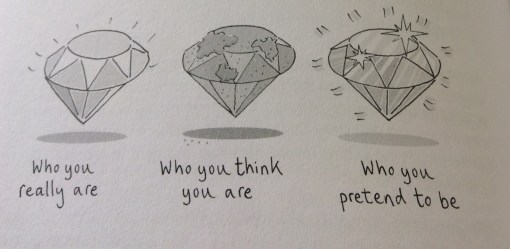
From: Instant Motivation Chantal Burns 2015
What the horse knows: Life Lesson No 6: Motivation
As living beings, having thoughts is part of what it means to be alive. As far as we currently know, stones and rocks don’t have thoughts in the way we do. A pebble doesn’t wake up in the morning thinking: Gosh is that really the time? Why is it so blinking dark and oh, groan, I haven’t got any milk. Can I get away with going to Tesco in my pyjamas? A non-sentient stone exists in a state of readiness for whatever life throws at it – be it rain, wind, hail, or the passage of hooves. Stones have a pretty comfortable existence because they live without angst.
In spite of having to cope with one annual season of sometimes harsh weather and perpetually irritating summer flies, our horses live without angst nearly all of the time. They are at ease within their own skins. As they browse and roam and play, they naturally socialise and when they’ve had enough interaction they can take some time off to doze in peace. Still, they are most unstone-like. Horses have strong feelings and desires and needs which motivate them to act. A stone can’t take itself off for a bit of quiet time under an oak tree.
It requires motivation to live a sentient life. Horses express their motivations in individual ways. Sheranni needs to know that the way ahead is clear and free from danger. Many times, I’ve suggested cantering along a winding track and he’s suggested we wait until the invisible person with the dog coming around the corner has appeared. I know from experience not to urge him on when he’s waiting for the coast to clear. He’s motivated by keeping everyone (thankfully including me) safe.
Yesterday morning, I received a lesson in a rather different kind of motivation from our Dartmoor pony Bella. Now Bella likes to take things easy. She’s not motivated by excitement or danger. Tranquility and peace of mind are essential to her well-being. Life wasn’t always serene for Bella. Born feral, she first came off Dartmoor an anxious young filly and it took her a while to get the hang of people. Now she adores people and will approach and ask for scratches and grooming.
Bella’s total ease with life sometimes creates problems for her humans because when she lies down she is so peaceful, she sometimes looks stone dead. She has been checked for laminitis this week and her feet are clear. Yesterday, approaching her in the warm spring sunshine she seemed glued to the ground. Trying to motivate her to get up proved useless. The thought occurred that she might have colic. I urged her onto her feet. She ignored me. Wondering what to do, I walked away. Bella groaned. She released a belly full of gas and slowly and deliberately hauled her body off the grass.
Watching Bella calmly join her herd and return to grazing, I understood that she didn’t have colic or laminitis or any other pony problem. The problem was my own thinking. Bella wanted to lie down because she enjoys relaxing. Her sides were heaving a little because she still has some winter coat and she was simply hot. She was not motivated to get up because for her there was no emergency.
As over-thinking humans, we can learn much from observing the simple daily routines of animals. The tendency to cloud our busy minds with self-perpetuating problems so that we can we pick away at them all day and become the heroes of our own dramas can become so habitual it becomes a way of life. Our problems can easily overwhelm us to the point that it becomes difficult to listen to our true motivations and know who we are.
Leadership coach Chantal Burns – http://www.chantalburns.com – in her useful book Instant Motivation shares this metaphor from her friend Paul Hunting who works with horses and people.
Imagine that we’re all born as a beautiful diamond – this represents who we really are. Then we cover it up with horsesh**t. This represents our self doubts and insecurities based on who we think we are. Then we cover that up with another layer of shiny varnish which represents the ‘I’ that we want to project to the world – who we pretend to be in order to compensate for who we think we are. We all have different varnishes. They might include status, material wealth or just ways of behaving. An example might be ‘the joker’ or ‘the reliable one’ or perhaps ‘the shy one.’ We might use other varnishes such as our family role or our job position. But our true nature is the diamond. Everything else is made up.
When we pretend to be other than we are horses see straight through us because they want to reach the diamond.  Horses value what is most clear in us. The beauty of working with horses who see beyond our insecurities and anxieties is their ability to point out how light and sparkling we can all be, if we could just drop the pretence.
Horses value what is most clear in us. The beauty of working with horses who see beyond our insecurities and anxieties is their ability to point out how light and sparkling we can all be, if we could just drop the pretence.